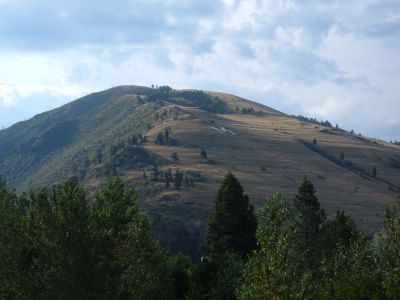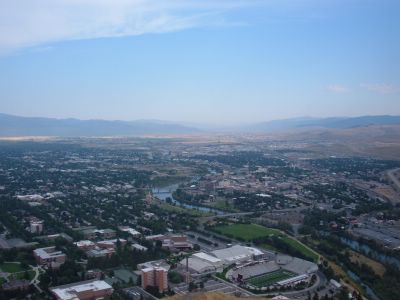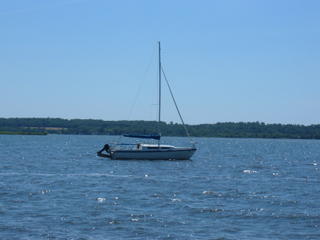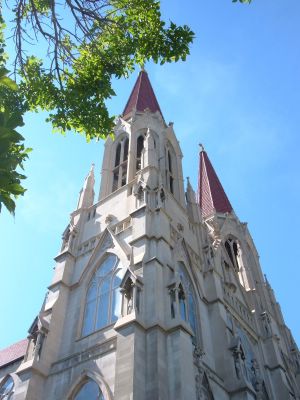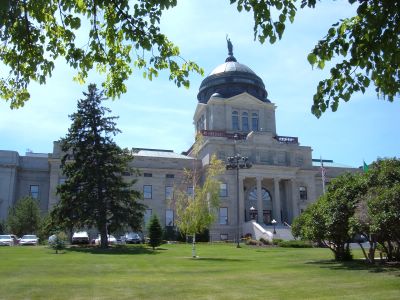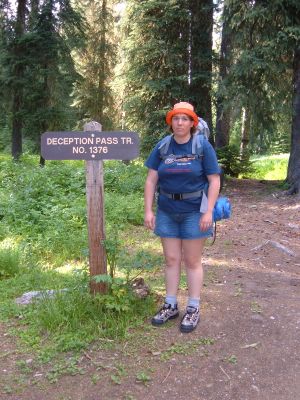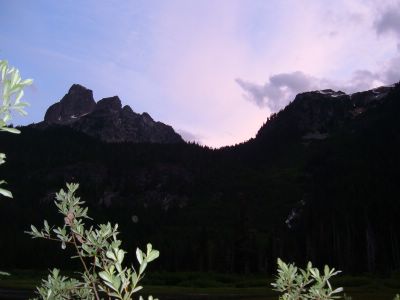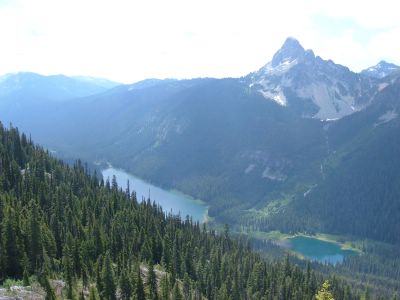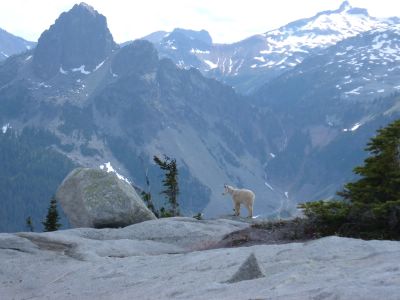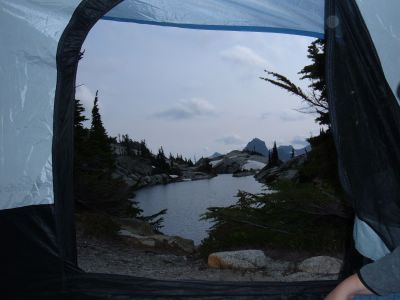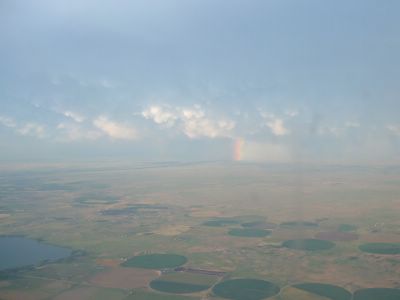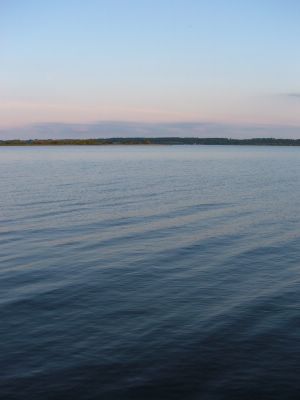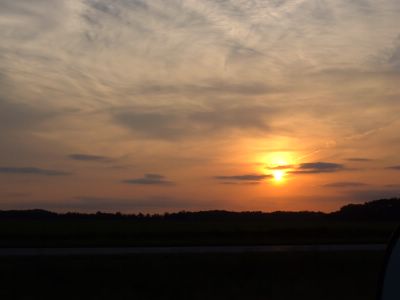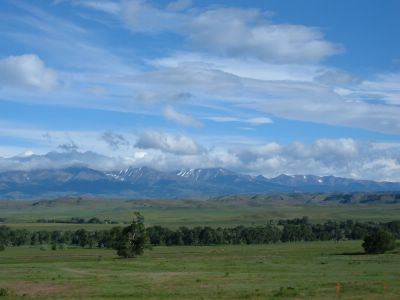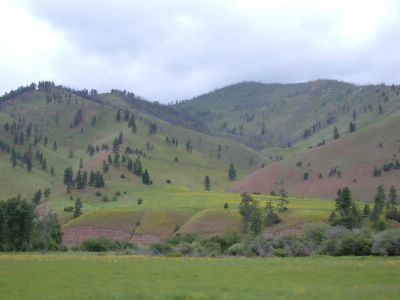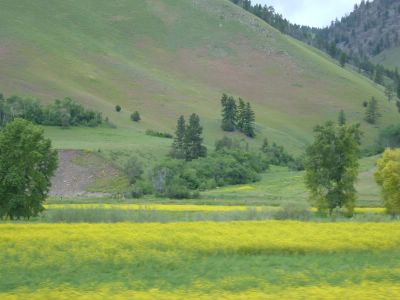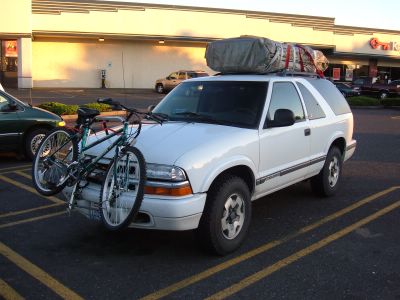While I'm on the subject of my freight doggery, I should write about the route I flew for most of my full-time Ameriflight career: Amflight 132.
At the Burbank base, every Ameriflight new hire started out in the
Piper Lance, a 300 horsepower single engine airplane. At the time, expected upgrade into the
Chieftain was around two months. I did indeed upgrade into the Chieftain within several months, but due to a number of circumstances, including the incident I'll relate below, I was unable to hold a Chieftain route until just before I left for my current company.
At Burbank we had four Lance routes. The layovers were Bakersfield, Calexico, San Diego, and Mammoth Lakes. The Mammoth Lakes run in particular, AMF 132, had a nasty reputation, so as the youngest and most junior member of my class, it was the route that I ended up with. I stuck with it later because neither Bakersfield nor Calexico appealed to me. AMF 132 was my route from October 2003 to April 2004.
AMF 132 has a bad reputation at Ameriflight. The routing was from Burbank to
Inyokern to
Bishop to
Mammoth Lakes each morning, then the same airports in reverse in the afternoon. This took you up and down the middle of the
Owens Valley, a deep depression bordered by the escarpment of the Sierra Nevada to the west and the Inyo Mountains to the east. When fronts pass through the Sierras, especially in winter, 80+ knot winds howl over the peaks and through the canyons, resulting in legendary turbulence in the valley. It's one of the premier wave-soaring spots in the world. In the 1950's, the
Sierra Wave Project studied the then-unknown phenomenon of mountain waves using beefed-up sailplanes based at Bishop. One of them was lost when torn apart by rotor turbulence that induced wind gusts estimated at well over 100 mph and loadings around 16 Gs (the pilot miraculously survived, and still hangs around the Bishop airport). Ameriflight has had pilots quit on the spot during harrowing days in the Owens Valley. Other pilots took along football helmets.
Most days, I enjoyed flying AMF 132. The scenery was stunning, and the layover in the mountain town of Mammoth Lakes was enjoyable. When the weather was bad, though, it was miserable. At best you'd spend a few hours slogging through moderate turbulence. I can honestly classify the turbulence on several occasions as being thoroughly severe. On really bad days, you'd fly the route at 500 feet off the valley floor, keeping most of the rotor above you. If it was bad down there, you'd go back up and cinch down your seatbelt until it hurt, and slow the plane down.
The really ugly thing was that you knew exactly where the next blast would come. You'd see the next canyon outlet coming, and you could count down the seconds until you hit the shear. Three, two, one, BAM! You be holding on to the yoke with one hand and the instrument panel with the other, and would be thrown violently up into the seatbelt, often smacking your head on the headliner or side window. The severe beating would continue for several seconds, then settle down to a mild thrashing until the next canyon. I came away with bruises on several occasions, from the seatbelt as well as the headliner and side window.
Besides turbulence, the route had other weather hazards throughout the winter, including high ground winds, low ceilings, and snow. The company had a high amount of flexibility - whatever I wanted to do went unquestioned. If I saw ugly stuff moving in, I'd have the couriers show up early, or else reposition further down the valley and have them drive part way. On one particularly ugly day, the weather chased me down the valley on three different repositioning legs, and I finally flew into Burbank empty rather than have weather strand the plane in the high desert. I got trapped on only one occasion, when a unpredicted snowstorm socked in Mammoth Lakes before I could race to the airport and take off for Bishop. I was actually taxiing out when the fury hit; I simply turned around, shut down, and called the company to tell them I wouldn't be making it home. At the time, I was "cross-training" another Ameriflight pilot, Mike Ahn, on the route. We settled in at the company's condo in town and watched two feet of snow bury the town.
In January 2004, I was pulled off the route to do training in the Chieftain. Mike Ahn was my replacement pilot during training. The first several days, it was poor weather in the valley. I felt bad, knowing he was taking a beating in my place. January 21, however, dawned clear and bright, with little wind. I flew a Chieftain run to Oakland in the early morning and was done by 9AM. The next morning, I checked in for another training run when my eyes caught a posting near the dispatch desk:
1/21/04
Ameriflight regrets to announce that AMF132, a PA-32R, crashed near Big Pine, CA, this morning. The pilot, Michael Ahn, was killed instantly....
It was a boot kick to the stomach. Before I got to the part about Mike, AMF132 jumped out at me, and my first thought was "that's me!" A millisecond later I realized it was Mike, and that's when I read that he was dead. I'd known Mike for a while. He instructed with me at ADP, and also was hired to fly freight at AEX at the same time I was. He left AEX shortly before I did, and was in the class after me at Ameriflight. And now he was dead. And I had to go fly. As I preflighted, I called Dawn and told her the bad news. Then I called Mark Webster at ADP. He'd already heard. My training captain arrived, and I took off to fly ILS approaches and holding patterns through tears.
It was good weather on the morning he
crashed. His last communication, about 15 minutes before the crash, was when Joshua Approach cancelled VFR flight following just north of Owens Lake. He flew straight ahead, at around 6500 feet, and impacted an old volcanic cinder cone just south of Big Pine, CA. The wreakage indicated straight and level flight. Although the final NTSB report isn't out yet, everybody's best guess is that he simply fell asleep. Mike wasn't a morning person at all.
Going back on the route was tough. The first day, there were lots of hugs and tears from the couriers. Subsequent days, they were on the phone to company if I was even 5 minutes late. By this time, I was familiar to a lot of people in Mammoth Lakes, and the next time I saw each of them, it was like they were seeing a ghost. They'd heard of the crash & assumed it was me. When the local librarian saw me, he went white and muttered an expletive. He'd also met Mike, so I then got to explain that while I was alive, Mike was indeed dead.
I stayed on the run, flying over the crash site twice a day. Mike's absence, as well as several junior pilots washing out of training, meant that they needed me to keep flying the Lance, so the Chieftain routes remained out of reach. I renewed my efforts to get hired at my current company. I got an interview in March and was hired for the 8 April class. I flew the Mammoth Lakes run for the last time on April 1.
I made some good friends on that route. I especially miss talking to Greg and Elise at
Hot Creek Aviation. I still call on Unicom occasionally when flying over. I'm hoping to go skiing at Mammoth Mountain next year. Maybe I'll jumpseat to Burbank and catch a ride with AMF132.

The wreakage of AMF132, Lance 8701E.
